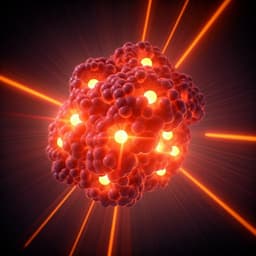
Physics
Quantum double lock-in amplifier
S. Chen, M. Zhuang, et al.
This groundbreaking research by Sijie Chen, Min Zhuang, Ruihuang Fang, Yun Chen, Chengyin Han, Bo Lu, Jiahao Huang, and Chaohong Lee introduces a novel quantum double lock-in amplifier that showcases enhanced measurement efficiency and resilience against experimental imperfections, all through the use of Rb atoms. Discover how this protocol could revolutionize quantum sensing!
Playback language: English
Related Publications
Explore these studies to deepen your understanding of the subject.







